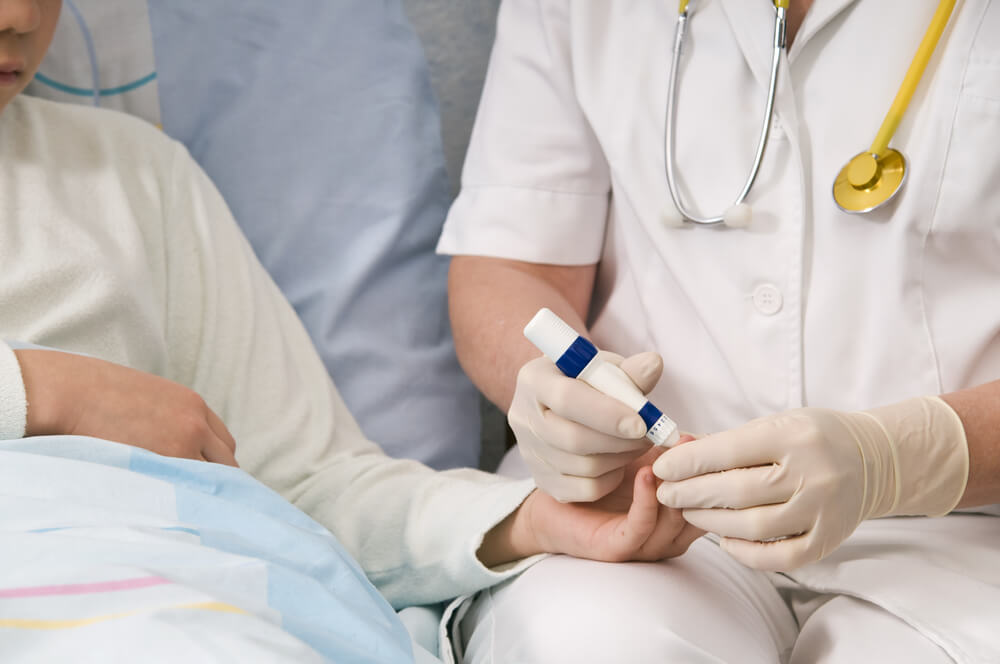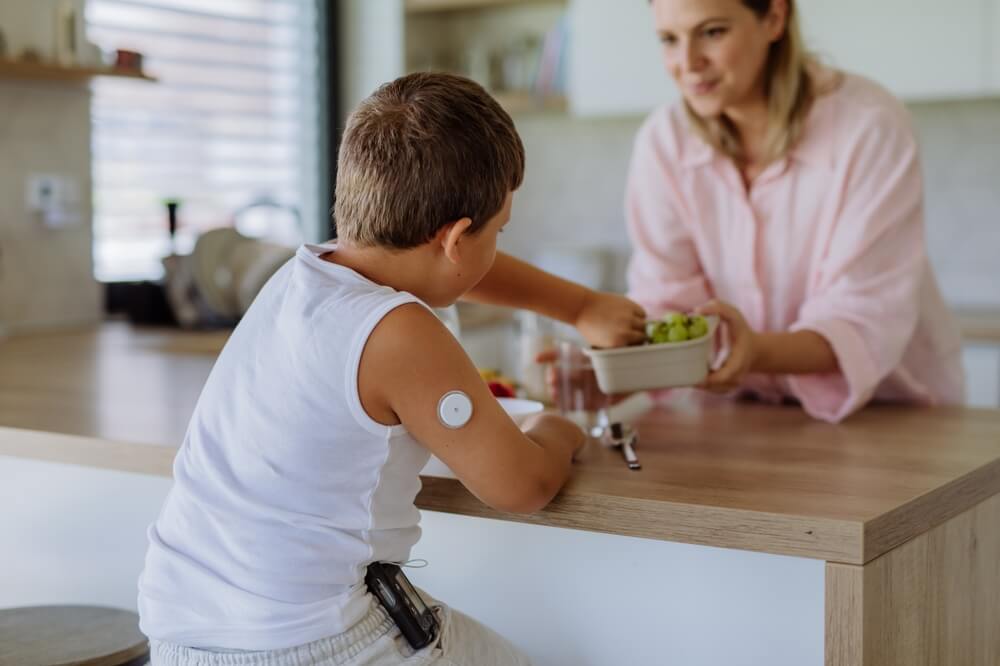What is Hypoglycemia in Kids?
Hypoglycemia is a medical condition characterized by an abnormally low concentration of sugar (glucose) in the bloodstream. Glucose serves as the primary source of energy for both the brain and the body. The standard reference range for blood glucose typically falls within the range of approximately 70 to 140 milligrams per deciliter (mg/dL). However, it is important to note that these values can fluctuate depending on various factors, including recent meals and medications administered. Infants and young children diagnosed with type 1 diabetes may have distinct target ranges for blood glucose levels compared to older children, as these ranges are tailored to their specific needs and developmental stages.
In this article, Dr. Liat Corcia and her team of pediatric endocrine specialists in Miami discuss the topic of pediatric hypoglycemia and what does it means for a child to be hypoglycemic.
Causes of Hypoglycemia in Children

Usually, experts may diagnose hypoglycemia as a condition by itself. In other cases, it can be a result of other disorders or diabetes. Typically, it will develop in children with diabetes. Still, low blood sugar in kids may occur without diabetes, most often due to not getting enough nutrients because of fasting or illness.
Generally, pediatric hypoglycemia develops when insulin levels are high. That said, the causes in children who have diabetes may include the following:
- Missing meals
- Getting too much insulin or diabetes medicine
- Getting the wrong type of insulin
- Delayed meals
- Not enough insulin taken or not enough food eaten
- Vomiting or diarrhea
- Getting more exercise than usual
- Congenital problems with how the child’s body processes starches and glucose
- Other rare genetic issues
- Taking sulfonylurea
- Other medical conditions, such as adrenal problems or celiac disease
- Infections, injury, emotional stress, or illness.
Low blood sugar in children without diabetes may occur in the following cases:
- Following vigorous exercise
- When they are taking specific medicines
- When they have been fasting for a longer period
- After alcohol or aspirin abuse
- Due to conditions that lead to hyperinsulinism (when the body has too much insulin)
- When the pancreas (the organ that produces insulin) has a tumor.
The biggest risk factor for hypoglycemia in kids is having been diagnosed with type 1 diabetes.
Kids With Low Blood Sugar: Pediatric Hypoglycemia Symptoms
While they may differ for each child, the symptoms of Hypoglycemia are:
- Hunger
- Headaches
- Sweating
- Shakiness
- Pale skin
- Dizziness
- Irritability
- Confusion
- Seizure
- Troubles focusing
- Jerky and clumsy movements
- Nightmares during the night and confusion when waking up
- Tingling sensations around the mouth
- Sudden behavioral changes, moodiness, throwing tantrums, and/or crying for no reason.
Most hypoglycemia symptoms resemble signs of other conditions, and as such, establishing a proper diagnosis is pivotal for receiving proper and effective treatment.
Diagnosing Hypoglycemia in Children
When diagnosing Hypoglycemia in children, the healthcare provider will begin by inquiring about your child’s current symptoms and reviewing their medical history. Additionally, the healthcare provider may seek information regarding your family’s medical history to understand potential genetic or hereditary factors. Subsequently, a thorough physical examination of your child will be conducted.
In cases where a child with diabetes presents symptoms suggestive of hypoglycemia, the predominant cause is typically attributed to an insulin reaction. This leads to an excessive drop in blood sugar levels due to insulin administration.
For children who exhibit symptoms of hypoglycemia but do not have diabetes, the healthcare provider may pursue the following steps:
- They may measure the levels of different hormones and blood sugar while the child exhibits the symptoms.
- See whether the symptoms have subsided after the child eats sugar or food.
- Perform several tests to measure insulin action.
In some cases, experts may advise performing a supervised fasting study in the hospital. During these tests, providers test for hypoglycemia under safe and controlled conditions.
Treatment for Pediatric Hypoglycemia
Treatment for Pediatric Hypoglycemia will mostly depend on the symptoms the child is exhibiting, their general health, and age. Also, it will depend on the condition’s severity.
In the case of children who have type one diabetes, the aim of the treatment is to keep the blood glucose levels in safe ranges. This may be achieved by:
- Frequent blood glucose testing
- Learning to recognize the telltale signs
- Treating the condition as soon as possible.
For the latter, the child should drink or eat something with sugar. These include:
- Cake icing
- Orange juice
- Hard candy
It is important to note that parents should avoid foods that are also dense in protein, such as nuts or milk, as they may also increase the insulin response to dietary carbohydrates.
After drinking or eating, parents should check the blood glucose levels of the child every fifteen minutes until the levels reach or exceed 100 dg/dL. In more severe cases, the child may need to be administered a glucagon injection. Still, this treatment should be discussed with your pediatrician.
Potential Complications
The brain relies on an adequate supply of blood glucose to maintain its proper functioning. Insufficient levels of glucose can compromise the brain’s ability to operate effectively. Prolonged or severe hypoglycemia has the potential to induce seizures and result in significant brain injury.
Prevention

Unfortunately, not all hypoglycemia episodes are preventable. Most children who have type 1 diabetes are prone to deal with hypoglycemia. That being said, the chances of severe hypoglycemic episodes will lessen as the child grows older.
Parents may take the following precautions to prevent severe episodes:
- Frequent blood glucose testing, even at night.
- Learning to recognize early symptoms.
- Ensuring that the glucose test stripes match the glucose meter and aren’t outdated.
- Quickly treating the condition.
Other ways that may minimize or even prevent hypoglycemia:
- Make sure that the child eats enough
- Ensuring they do not skip meals
- Making sure that they take their medicines at the right time
- Ensuring that they get healthy snacks, if necessary, with complex carbohydrates and some fats.
How May Parents Help Children With Hypoglycemia?
Children diagnosed with type 1 diabetes or other medical conditions predisposing them to hypoglycemia should diligently adhere to their personalized care plan. This entails frequent blood glucose monitoring, prompt recognition of symptoms, and timely intervention when necessary. Furthermore, consistent adherence to medication schedules and regular meal patterns is crucial.
Collaborating closely with your child’s healthcare provider is essential in formulating a care plan specifically tailored to your child’s daily routine and activities. It is highly beneficial to educate your child about their condition, encourage them to compile a list of diabetes-related inquiries for healthcare provider consultations, and facilitate an environment where they can comfortably ask questions. Ensuring that the healthcare provider’s responses are conveyed in an age-appropriate and understandable manner is also pivotal.
Furthermore, fostering collaboration with school nurses, educators, and psychologists is essential to create an accommodating plan that aligns with your child’s unique needs and ensures their well-being within the school environment.
Also, parents can always rely on the help of expert pediatricians. That said, you can always reach out to us if you want to learn more about pediatric hypoglycemia or have any concerns about the condition.

